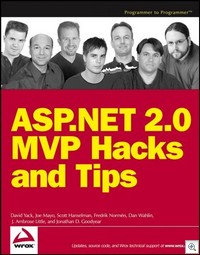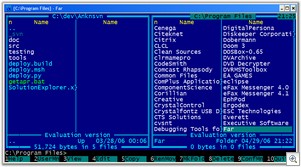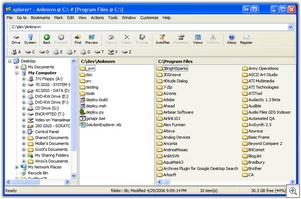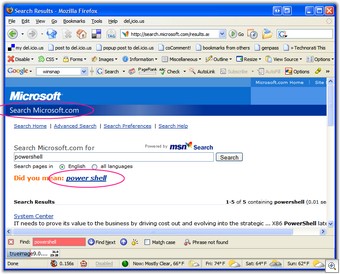Just an FYI to those who care. Joshua Flanagan has been goodly enough to help us move DasBlog's source from CVS to SVN up on SourceForge. To browse the project on the web, go to: http://svn.sourceforge.net/viewcvs.cgi/dasblogce/
Note: Most DasBlog enthusiasts chase the source code and are running the latest stuff by building it. However, for the rest of us, we do recognize the need for a 1.9 binary release and will get to it soon.
However, if you DO want the code...here's Josh's excellent instructions:
Getting the Code
To retrieve and work with the code, you need a SubVersion client.
- You can use the command-line client (not recommended) http://subversion.tigris.org/
- Or you can use the TortoiseSVN Windows shell extension (rockin' sweet): http://tortoisesvn.tigris.org/
- In either case, you must enable the ASP.NET "hack". It simply requires you set an environment variable before working with SubVersion: set SVN_ASP_DOT_NET_HACK=1.
NOTE: The new TortoiseSVN will ask you this when you install it. Here's more information about the switch/hack.
The rest of these instructions assume the command-line client. The equivalent actions with TortoiseSVN should be obvious.
The first thing you will notice is that the project root folder (dasblogce), has 3 subfolders:
[branches]
[tags]
[trunk]
These 3 folders are a common convention in Subversion repositories. You can read about them in the Subversion book http://svnbook.red-bean.com/. If you are new to Subversion, I highly recommend you read the first 3 chapters. If you are already familiar with Subversion and how to use these folders, you can skip down to the section labeled *DasBlog Specifics.
For example, to checkout a working copy of the entire codebase, you would use the following command:
svn checkout https://svn.sourceforge.net:443/svnroot/dasblogce/trunk dasblogce
This will create a new folder on your filesystem named dasblogce which contains all of the data under the trunk folder. Nothing from branches or tags will be retrieved.
The DasBlog trunk folder has the following layout:
[docs]
[lib]
[source]
[tools]
The source folder contains only the source code and automated unit tests created by the DasBlog development team. Under CVS, this folder held all files related to the project. The following sections will describe the new location for files that are not considered part of the DasBlog source code, but are still kept with the project.
The docs folder contains all documentation and reference material (URL links). This includes the readme, license, and release notes.
The lib folder contains all compiled 3rd party assemblies referenced by the source code projects.
These files used to be in the source\Assemblies folder. The projects under the source folder have been updated to reference the files in the lib folder (which is why it is important to checkout the entire trunk, and not just the source subfolder, when working on code).
The tools folder contains all of the executables needed to support the development and packaging of DasBlog (not including the .NET Framework itself). For example, the tools\nunit folder contains all of the nunit executables required to run the DasBlog unit tests. Note that the nunit.framework.dll referenced by the test projects is copied to the lib folder - source code should not reference files in the tools folder directly. Keeping the tools stored with the project helps ensure that all developers on the project always use the same version. (You will want to remove NUnit from your GAC to avoid overriding the project copies.) For more information about this strategy, check out Mike Robert's excellent article "How to setup a .NET Development Tree":
Kudos and big thanks to Josh for taking the initiative on this!
Hosting By

 David Yack got a bunch of folks together and assembled ASP.NET 2.0 MVP Hacks from Wrox. Take a look at the picture on the right, totally looks like we're all in the same room with our twelve-sided dice, no? ;)
David Yack got a bunch of folks together and assembled ASP.NET 2.0 MVP Hacks from Wrox. Take a look at the picture on the right, totally looks like we're all in the same room with our twelve-sided dice, no? ;)
![]()






